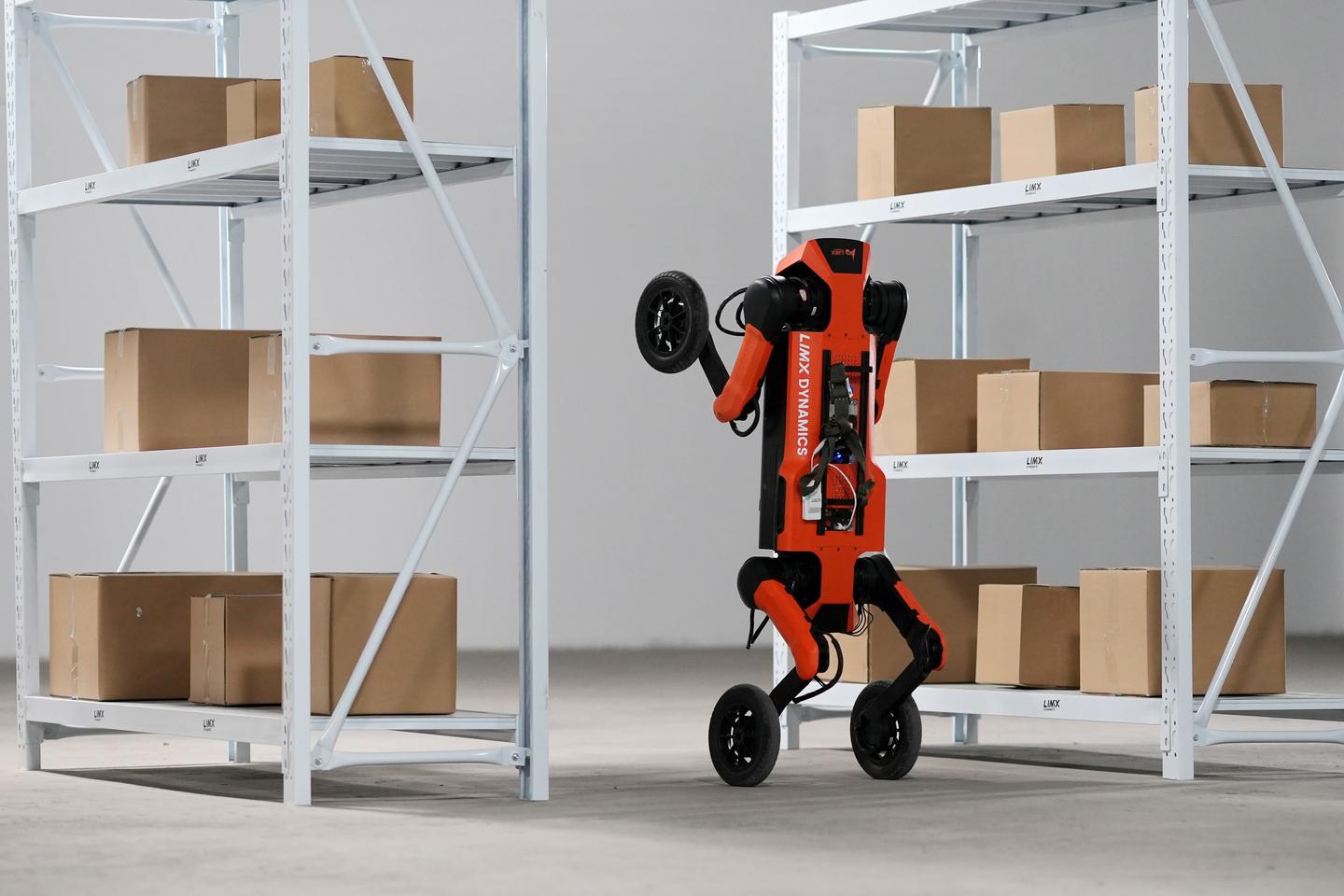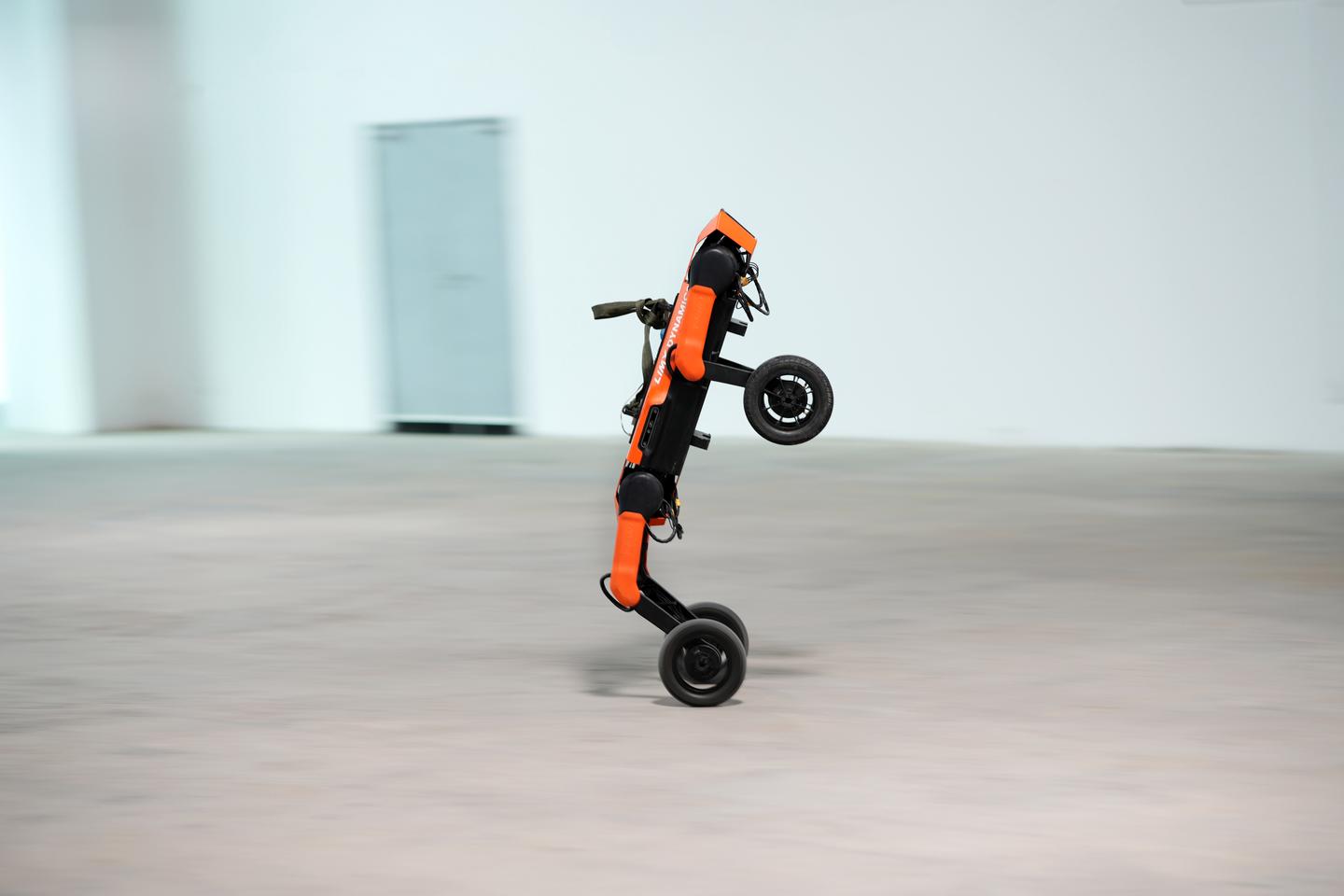You might think that having four legs with wheels on the ends would already make a robot pretty useful. China’s LimX Dynamics is taking things further, however, as its W1 quadruped robot is now able to stand up and walk on two “feet.”
It was just last October that we first heard about the W1, which was quite obviously inspired by the ETH-Zurich-designed Swiss-Mile Robot. Like that bot, it has four legs, each one with a powered wheel on the end.
For traversing smooth roads, sidewalks, floors or whatnot, the W1 simply rolls along on its wheels for optimum speed and energy efficiency. Should it need to step over obstacles, traverse rough terrain or climb/descend stairs, however, it stops and locks its wheels up. It then uses those wheels as feet while taking on a quadruped walking gait.
One thing that had set the Swiss-Mile apart from the W1 was the fact that if it needed to adopt a human-like form for certain tasks – such as giving or taking packages – it could stand up and either walk or roll on its hind legs. Well, the W1 can now do that too.

LimX Dynamics
Although not many technical details have been provided at this point in time, we do know that (when rolling) the standing robot can additionally rotate 360 degrees on the spot, make 90-degree turns, thread its way between obstacles such as shelving units, and recover from collisions without falling over.
It also switches from quadruped to biped mode in less than one second, standing 152 cm tall (59.8 in) once fully upright.

LimX Dynamics
In a just-released video, LimX only shows the W1 walking on two feet across a smooth floor. This leaves us wondering if it can climb stairs bipedally – as is the case with the company’s CL-1 humanoid robot – or if it has to drop to all fours to do so. It would also be good to know if the robot can perform tasks such as grasping items with its front legs while standing, as the Swiss-Mile bot can now do.
We’re still waiting to hear back from LimX about both questions. In the meantime, check out the new video below.
LimX Dynamics W1 Evolves into a Biped Robot
Source: LimX Dynamics
Source of Article

